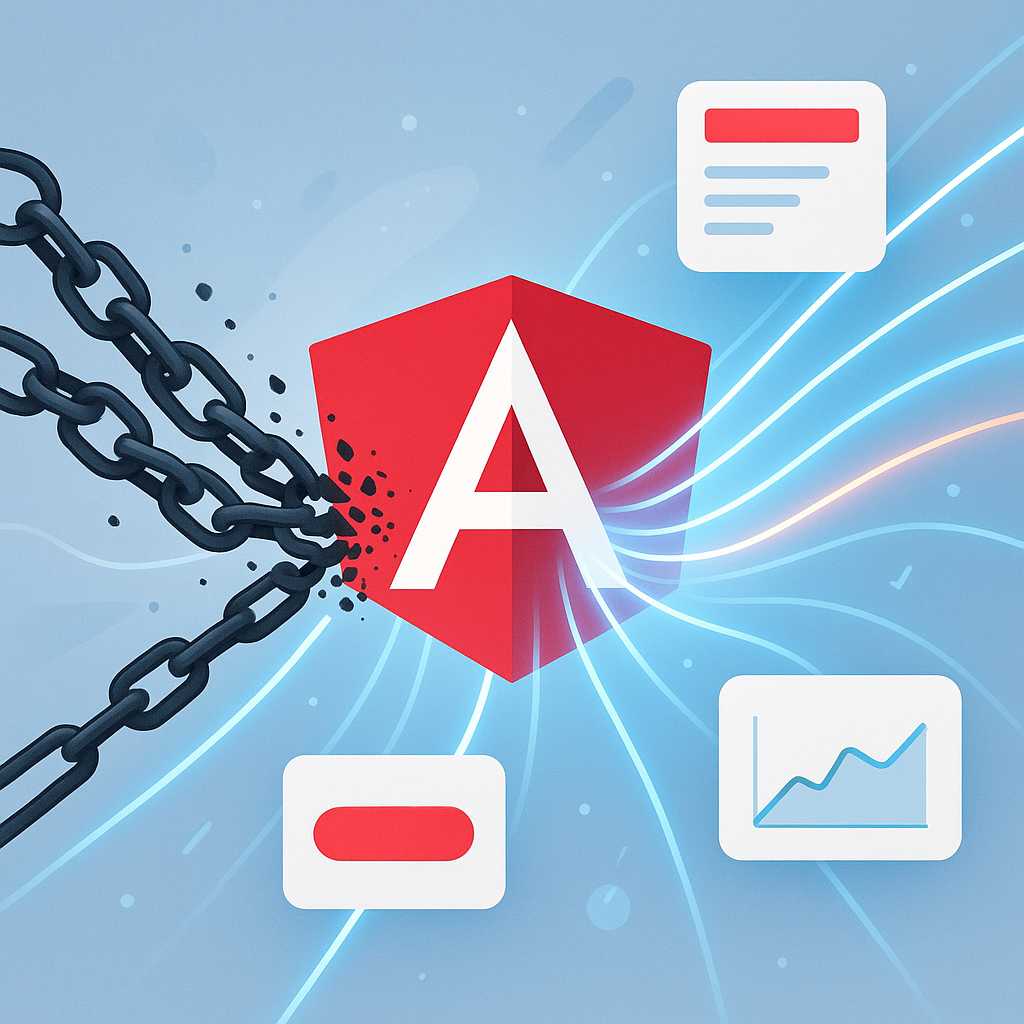Angular has long relied on Zone.js to drive its powerful change detection mechanism, making complex applications possible with relatively little manual wiring. However, with the introduction of Angular signals and recent improvements in reactive programming models, the Angular team has signaled an intentional move towards a zone-less (zone.js free) future. In this article, we’ll explore what this means for developers, the technical rationale, and how to prepare your projects for this shift.
What is Zone.js and Why Was It Used?
Zone.js is a library that monkey-patches asynchronous API calls (like setTimeout, XHR, and more) to hook into the JavaScript call stack. This allows Angular to automatically detect when the state may have changed and trigger a change detection cycle, ensuring the UI is always up-to-date with the application state. For years, this has been a core part of Angular’s reactivity.
Why Move Away?
While Zone.js is powerful, it comes with some drawbacks:
- Performance Overheads: Monkey patching can add complexity and slow down execution, especially on large or performance-critical applications.
- Implicitness: The automatic tracking is magical, but can sometimes lead to hard-to-debug issues or missed optimizations.
- Testing Complexity: Test environments need to simulate or work around Zone.js, complicating test setups.
The modern web ecosystem emphasizes fine-grained reactivity and more explicit change propagation, as exemplified by frameworks like React, Svelte, Solid, and Vue (Composition API). Angular’s new signals API is a move in this direction.
Enter Angular Signals
Signals provide a explicit, reactive primitive for managing data flow. Conceptually similar to RxJS BehaviorSubjects or Svelte’s stores, signals let you define reactive state. Components or directives consuming those signals automatically update when their values change, without the need for a global patching library like Zone.js.
What Does Zone-less Angular Mean for Your Code?
- More Explicit Data Flow: Instead of relying on Angular to auto-detect changes, developers will need to embrace more explicit reactive patterns—using signals, observables, or their own event triggers.
- Better Performance: Benchmarks show measurable improvements when Zone.js is removed, as change detection can be more targeted and less global.
- Backward Compatibility: The Angular team is committed to making the transition smooth. Zone.js will still be available, likely as an opt-in or for backwards compatibility, but new applications and optimized code will benefit from going zone-less.
How to Prepare
- Embrace Signals: Start refactoring state management with Angular signals. The more of your state and UI interactions are managed reactively, the less impact zone removal will have.
- Identify Asynchronous Code: Be explicit about state changes triggered by events, HTTP requests, and timers. Ensure your code updates the relevant signals or observables when data changes.
- Update Third-Party Dependencies: Watch for dependencies that implicitly assume zone-patched environments. Libraries might need updates or polyfills until the ecosystem fully adapts.
Conclusion
The move towards a zone-less Angular marks a significant modernization of the framework, aligning it with contemporary best practices in UI reactivity. By embracing signals and more explicit state management, Angular developers can look forward to faster, more predictable applications—while still enjoying the robustness and productivity of this mature framework. Start experimenting today to ensure your projects are future-proof!
Angus is a software engineer specializing in Angular, TypeScript, and JavaScript. He enjoys writing in-depth articles and engaging in technical discussions on web development topics.


Leave a Reply